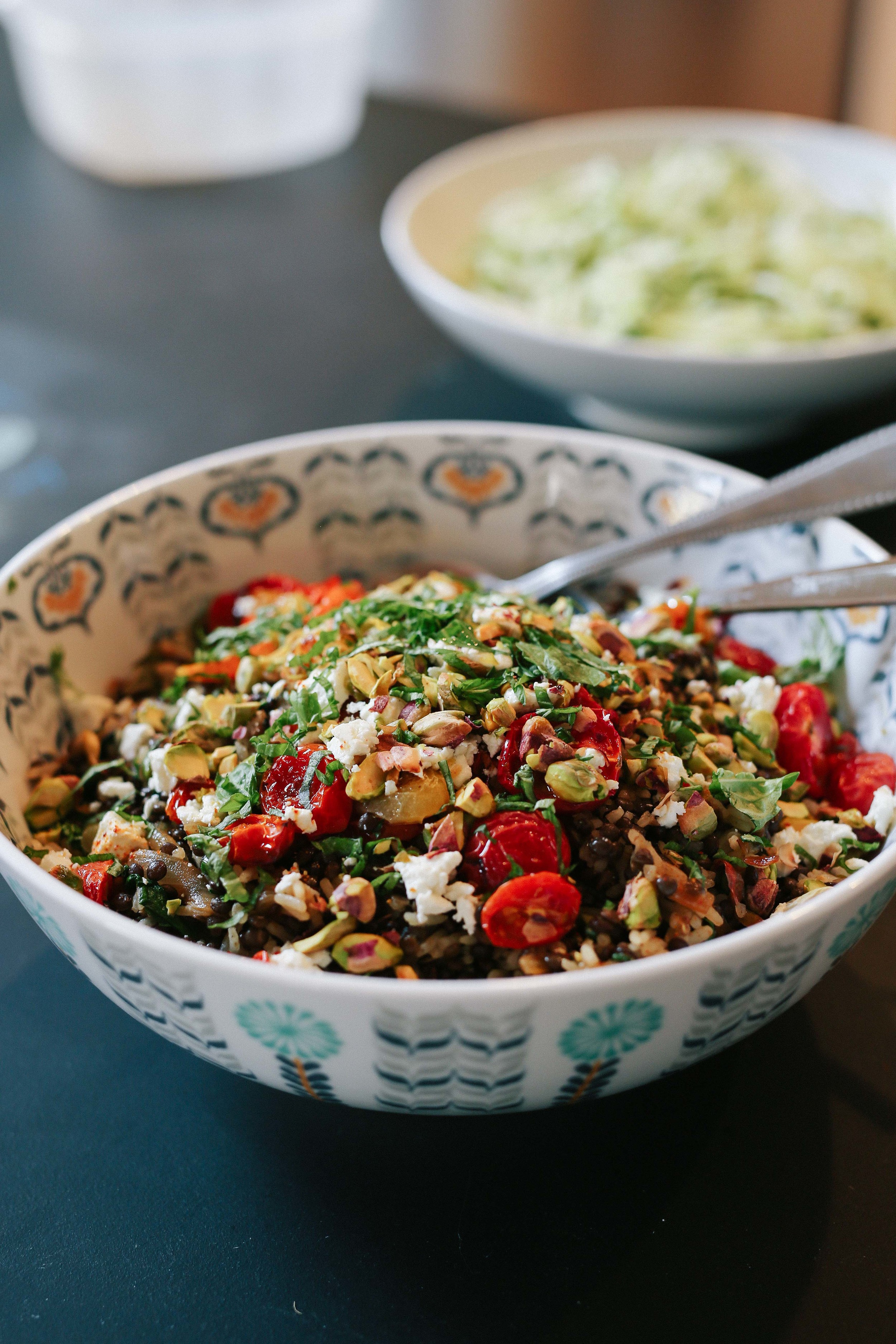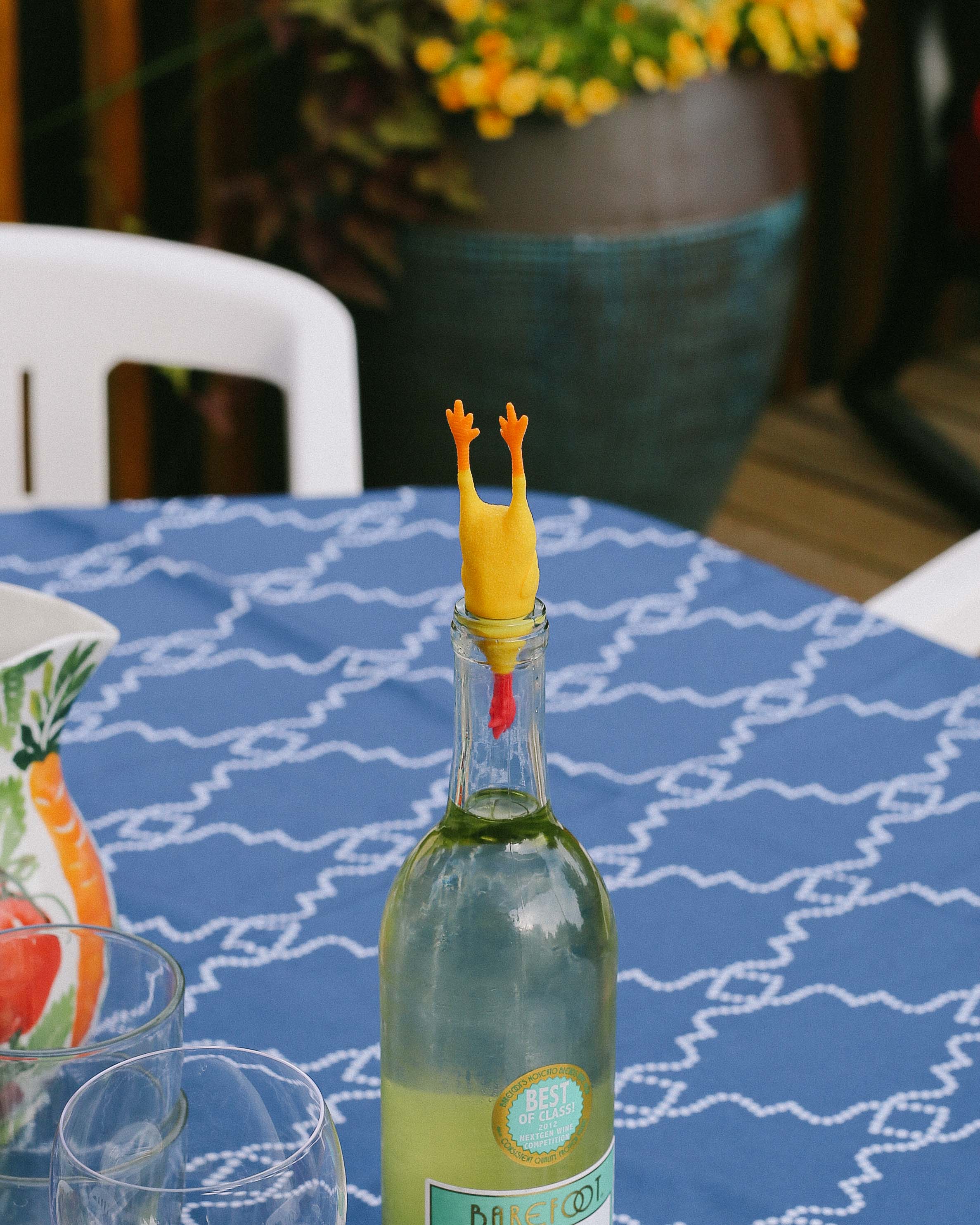I would wager a guess that 95% of you are really excited about this tomato and avocado salad, while 5% of you were immediately distracted by the denim tuxedo lurking behind that bowl of tomatoes. Lest ye judge me too harshly, note that it was laundry day. However, after wearing this outfit for a full afternoon, I can confidently say that this is a pretty rad shirt-pants combo. It is comfy, weather-appropriate for fall, and denim hides dirt well enough that you can't even tell that I was jumped by a chicken shortly before I took these photos.
But is this a fashion blog? Clearly not! Back to salad.
Richard and I went to the farmers' market this past weekend for the first time in two months, which is quite infrequent and very unlike us in general, but very like us when we are in camping mode. And the most gorgeous tomatoes are in season right now, all shapes, sizes, hues, varieties. Just color coming out of your ying yang. And we haven't been buying any for WEEKS, so we seriously need to make up for lost time.
This is a nifty little salad to keep in your back pocket for summer. You chop up some stuff, pile it on a plate, and drizzle a bit of vinaigrette over the whole thing. The point, I think, is to highlight all of those beautiful summer veggies when they are at their very best and most flavorful, so there's no drowning of anything in dressing. You could add other things if you like... grilled summer squash, lentils, fresh cheese, you name it. As is, this salad can double as a great topping (or relish, if chopped more finely) for grilled meat, or a nice brunch side for polenta or potatoes and eggs.
Ooo, just thinking about that is making me excited to go to bed already so I can wake up and make breakfast. BYE.
tomato and avocado salad with sweet corn and herb vinaigrette
serves 2 as a light main, or up to 4 as a side salad
1 small fresh shallot
1 tablespoon white balsamic vinegar, white wine vinegar, or lemon juice
kosher salt
black pepper
2 pounds assorted heirloom and cherry tomatoes
1 ear sweet corn
1 just-ripe (not mushy) avocado
1 teaspoon dijon or whole grain mustard (optional - omit if using cilantro (see next ingredient))
1 tablespoon mixed chopped herbs, such as parsley, basil, cilantro, or chives
1-2 tablespoons olive oil
flaky salt, such as Maldon, to finish (optional, but delicious)
Thinly slice the shallot and place it in a small bowl with the white balsamic vinegar, a pinch of kosher salt, and a grind or two of black pepper. Set aside.
Slice the heirloom tomatoes into thick slices or wedges. Slice the cherry tomatoes in half. Cut the avocado in half, remove the pit, quarter each half, and cut each quarter into 4 wedges or slices (wedges are easiest to cut if you remove the avocado skin first). Husk the sweet corn and slice the kernels away from the cob.
Alternate piling tomatoes and avocado slices on a serving plate, and scatter with the sweet corn. Pick the shallot slices out of the vinegar (reserving the vinegar), and scatter the shallot over the tomatoes, avocado, and corn.
Add the mustard (if using) and finely chopped herbs to the vinegar mixture and whisk to combine. Whisk in the olive oil until the vinaigrette emulsifies and thickens slightly. Taste the vinaigrette, adjust seasoning if needed, and spoon about half of it over the salad. Finish with a light sprinkle of flaky salt, and serve with the remaining vinaigrette and more flaky salt on the side.


















